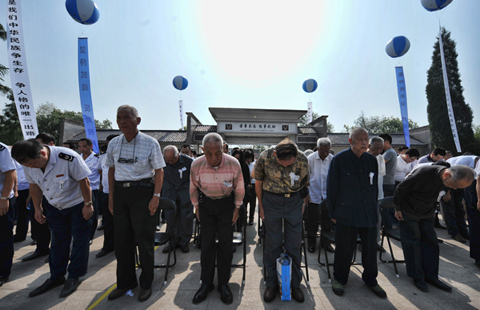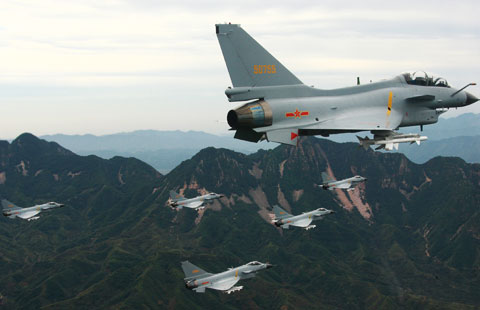Ban display of fascist symbols
Updated: 2014-09-10 08:17
(China Daily)
|
|||||||||||
During the Mid-Autumn Festival holiday, a furious crowd at Mount Taishan in East China's Shandong province stripped a 30-year-old man from Tianjin of his T-shirt that had "Imperial Japanese Navy" and the Japanese Self Defense Force's flag emblazoned on it, because public display of former fascist icons can never be accepted by people of a victim country, says an article on cnhubei.com. Excerpts:
The Tianjin man may have worn the controversial T-shirt out of ignorance, and although some people may argue that a man is free to wear whatever he wants to, no argument is strong enough to exonerate him of the irresponsible act of displaying fascist symbols.
The Taishan incident is different from the irrational smashing of Japanese cars and goods in some Chinese cities a few years ago, because the Kyokujitsu-ki (the military flag of Japan) is representative of Japanese militarism during World War II. The naval ensign and a modified version of the war flag continue to be used by the Japanese Self Defense Force.
On one hand, the flag shows that Tokyo is yet to own up to its war crimes, especially because it still serves as the emblem of the Japanese Self Defense Force. On the other, it reminds people of Asian countries that suffered Japanese invasion and atrocities of the grave misery and humiliation during World War II.
The use of Nazi-related icons or badges is forbidden in European countries, especially in Germany. And people who display them can face prosecution and jail terms.
Given Japan's reluctance to follow the European example - in fact, Japan is not even close to passing legislation to ban fascist symbols and emblems - China should issue a law to proscribing the display of Japanese militarist icons. Also, there should be a specific law in China to report people who use such symbols to police instead of forcefully undressing them in public.
Related Stories
Anti-Japan war documentary depicts defense of revolutionary base 2014-09-03 10:56
Japan must own up to militarist past 2014-09-03 09:30
Xi marks victory against Japan in World War II 2014-09-04 07:06
Host of Japan's historic surrender 2014-09-02 07:38
Today's Top News
Oxford University attests to power of the nation
Turkey in missile talks with France
EU tightens sanctions against Russia
HK tycoon makes largest donation to Harvard
Prince William unveils China study center
Obama to press action on IS
Ukrainian president orders ceasefire in east
Alibaba to raise $20b in IPO record
Hot Topics
Lunar probe , China growth forecasts, Emission rules get tougher, China seen through 'colored lens', International board,
Editor's Picks

|

|

|

|

|

|





